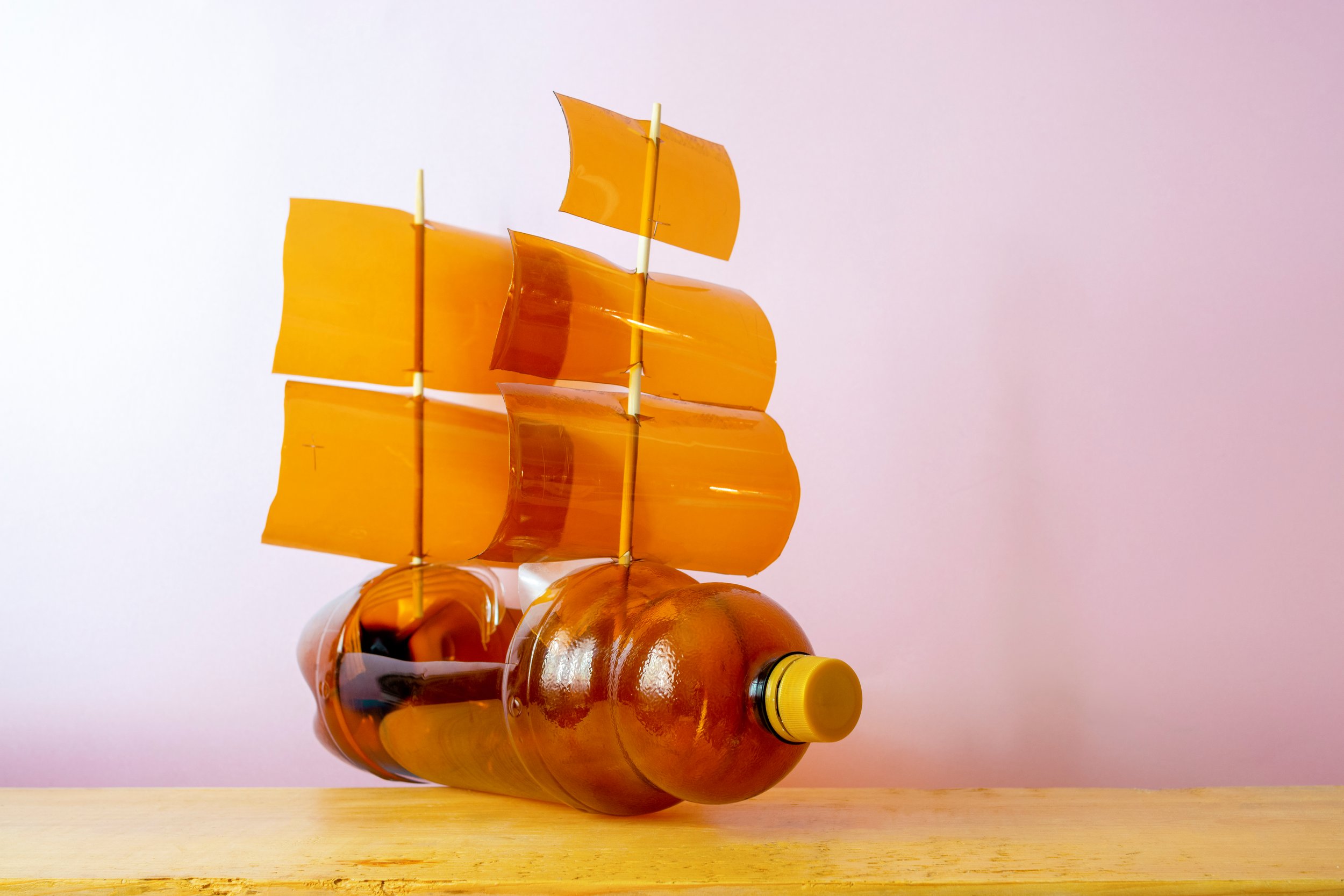
Building a Boat from Recyclable Materials and Testing Buoyancy
Engaging your children in hands-on science experiments is an excellent way to foster curiosity, creativity, and problem-solving skills. Building a boat using recyclable household materials and testing its buoyancy in a sink basin or bathtub is a fun and educational activity that combines elements of engineering, physics, and environmental awareness. Here's how you can help your child build a recyclable boat and conduct a buoyancy experiment at home:
1. Gather Materials:
Encourage your child to gather recyclable materials from around the house, such as plastic bottles, foam trays, cardboard, straws, popsicle sticks, and aluminum foil. These materials will serve as the building blocks for their boat.
2. Design the Boat:
Sit down with your child and brainstorm ideas for designing their boat. Discuss different boat shapes, sizes, and features, and encourage them to sketch out their design ideas on paper before starting construction.
Remind your child to consider factors such as buoyancy, stability, and weight distribution when designing their boat.
3. Build the Boat:
Using the recyclable materials they've gathered, help your child construct their boat according to their design. Encourage them to use scissors, tape, glue, and other tools safely and responsibly.
Experiment with different construction techniques and materials to create a sturdy and seaworthy boat.
4. Test Buoyancy:
Once the boat is built, fill a sink basin or bathtub with water to create a testing environment. Make sure the water level is deep enough to float the boat without touching the bottom.
Place the boat gently in the water and observe how it floats. Encourage your child to make observations about the boat's buoyancy, stability, and overall performance.
Experiment with adding weights or adjusting the boat's design to see how it affects buoyancy and stability.
5. Record Results:
Have your child record their observations and findings in a notebook or on a piece of paper. Encourage them to write down details such as the boat's design, materials used, and any modifications made during testing.
Discuss the results together and encourage your child to reflect on what they learned from the experiment. Ask questions to prompt critical thinking and problem-solving, such as "Why do you think the boat floated?" or "What could we do differently to improve its buoyancy?"
6. Reflect and Iterate:
After testing the boat, encourage your child to reflect on their experience and think about ways to improve their design. Discuss what worked well and what could be changed or enhanced in future iterations.
Encourage a growth mindset by emphasizing the value of learning from mistakes and iterating on designs to achieve better results.
Benefits of the Activity:
STEM Skills: Building and testing a boat engages children in hands-on STEM (science, technology, engineering, and mathematics) learning, promoting skills such as problem-solving, critical thinking, and experimentation.
Creativity: Designing and building their own boat encourages creativity and imagination as children explore different materials, shapes, and construction techniques.
Environmental Awareness:Using recyclable materials highlights the importance of sustainability and environmental stewardship, fostering a sense of responsibility towards the planet.
Hands-On Learning: Conducting experiments like testing buoyancy provides a hands-on learning experience that makes abstract scientific concepts tangible and relatable for children.
Building a recyclable boat and testing its buoyancy at home is a stimulating and rewarding activity that encourages exploration, discovery, and learning. By providing support, guidance, and encouragement, you can help your child embark on a voyage of scientific inquiry and creative exploration.
Happy boat building and testing!
